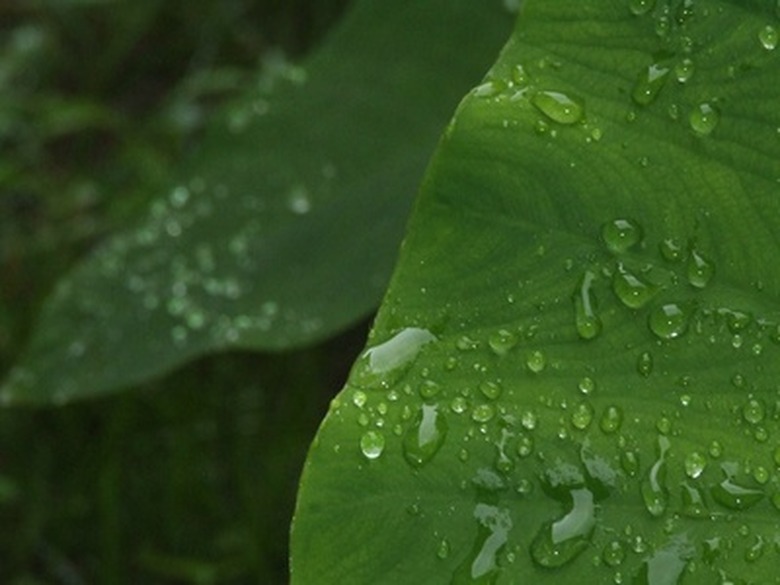How To Grow Elephant Ears In The Pacific Northwest
For a truly tropical effect in your garden, try the elephant ear, Colocasia esculenta, also known as taro and dasheen. They sprout from potato-like tubers, with large, heart-shaped leaves on long stalks that can make clumps 4 feet high or more. They love moisture, even growing in standing water, but need drier conditions during winter dormancy. Some varieties seem to be hardy in the warmer parts of the Pacific Northwest, USDA zone 8, but it is best to overwinter them inside. As you might expect from the species name, esculenta, the tubers are edible, but only when thoroughly cooked.
Step 1
Plant your elephant ear, either as tuber or a potted specimen, in an area that is as warm as possible, perhaps sheltered from wind by a fence or wall, and that has some shade. The plants will grow in full sun but will require wet soil to expand their large leaves. They will take full shade, but the more colorful varieties will remain green.
- For a truly tropical effect in your garden, try the elephant ear, Colocasia esculenta, also known as taro and dasheen.
- Some varieties seem to be hardy in the warmer parts of the Pacific Northwest, USDA zone 8, but it is best to overwinter them inside.
Step 2
Dig peat moss, steer manure, compost or other organic matter into the soil to increase its moisture-holding capacity. Using a shovel, mix it in to a depth of at least 1 foot.
Step 3
Plant your tuber or potted plant in your chosen area after the soil has warmed up, in May or early June. A tuber should be planted with the pointed end down, with 2 to 3 inches of soil over the top. A plant should be set in so that the soil level in the pot is the same as the soil level of the garden bed. Push the soil around your tuber or plant so that there are no air pockets remaining and water well.
Step 4
Apply fish emulsion or other high-nitrogen liquid fertilizer once a month beginning several weeks after planting, mixing it according to the directions on the package. Water the plant frequently, keeping the soil moist to wet.
- Dig peat moss, steer manure, compost or other organic matter into the soil to increase its moisture-holding capacity.
- Push the soil around your tuber or plant so that there are no air pockets remaining and water well.
Step 5
Dig the plant up in fall, before the first frost, generally before the end of October. Cut half the leaves off and pot it into a container large enough to hold most of the roots. Grow it indoors as a houseplant in a sunny room, watering normally, or hold it in a cool, shady, frost-free area with very little water. When the elephant ear is dormant, too much water will cause the stems to rot.
Tip
Searching out some of the new varieties of elephant ear is well worth the effort. Colocasia "Black Magic" has black stems and velvety, dark-veined leaves, while C. "Fontanesii" has purple stems and shiny reddish leaves. You can also find dwarf varieties.
Warning
Never eat any part of the elephant ear plant raw. The tissues contain an acrid compound, calcium oxalate, that can cause burning and swelling of the tongue, lips and throat.
Things Needed
- Peat moss, steer manure, compost or other organic matter
- Shovel
- Fish emulsion or other high-nitrogen liquid fertilizer
